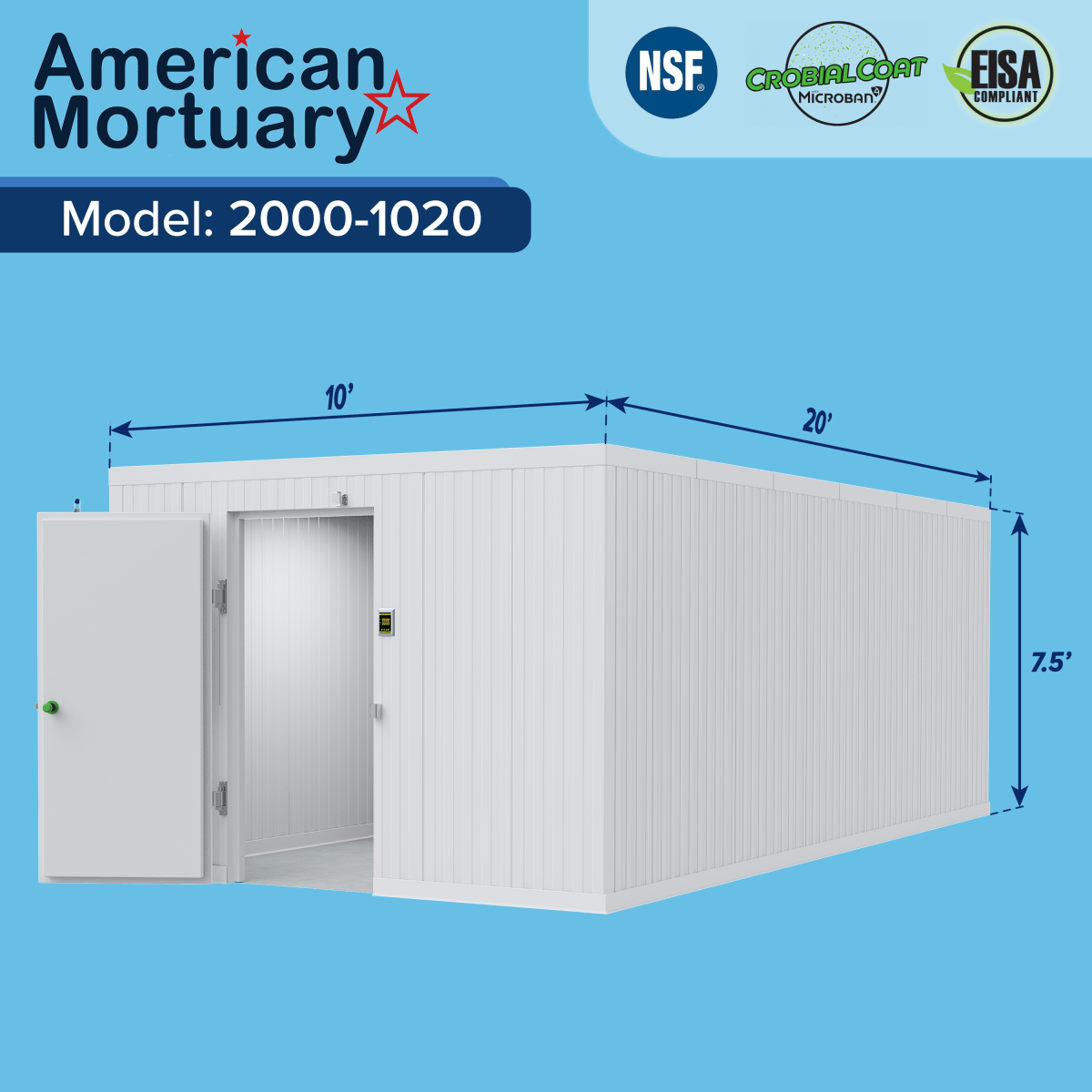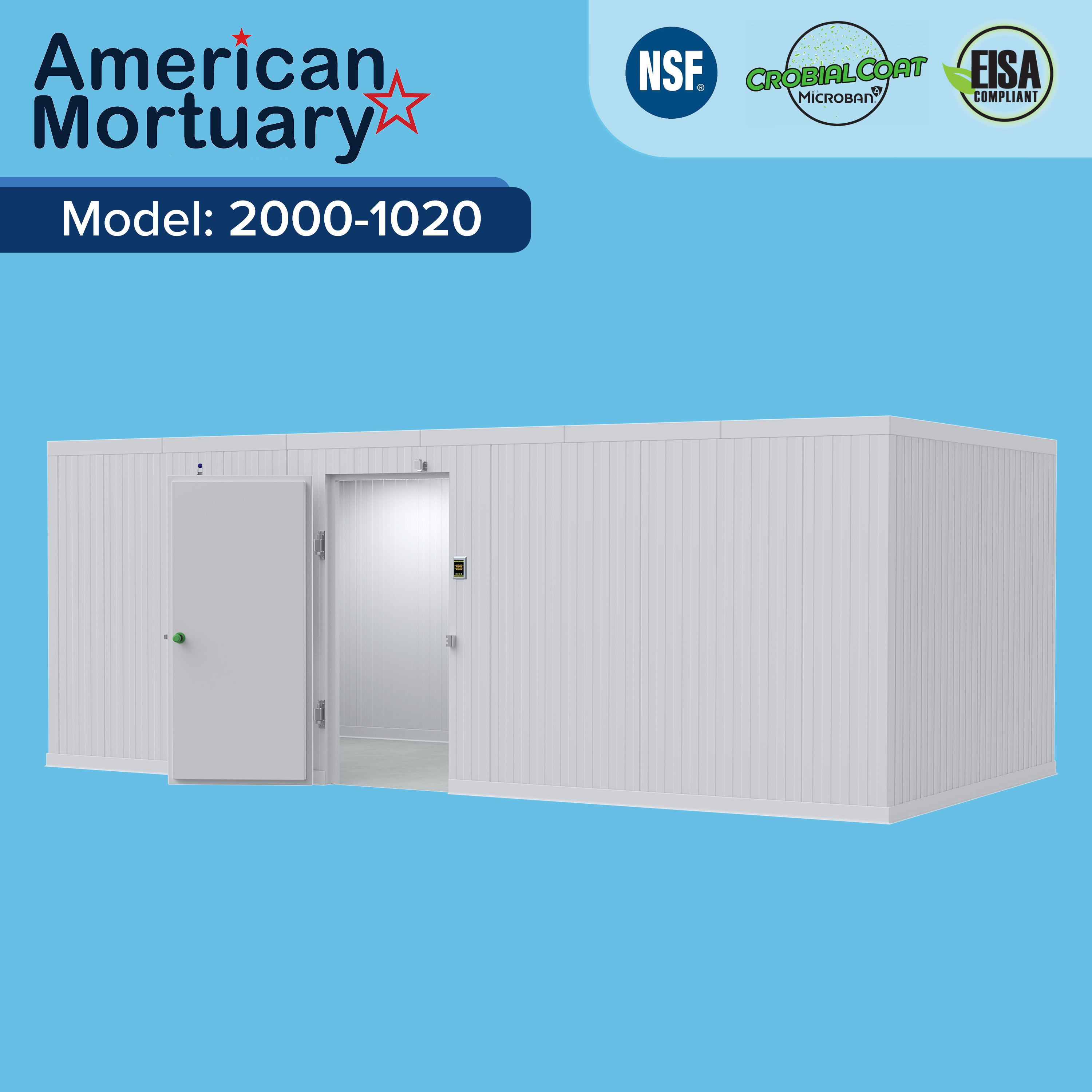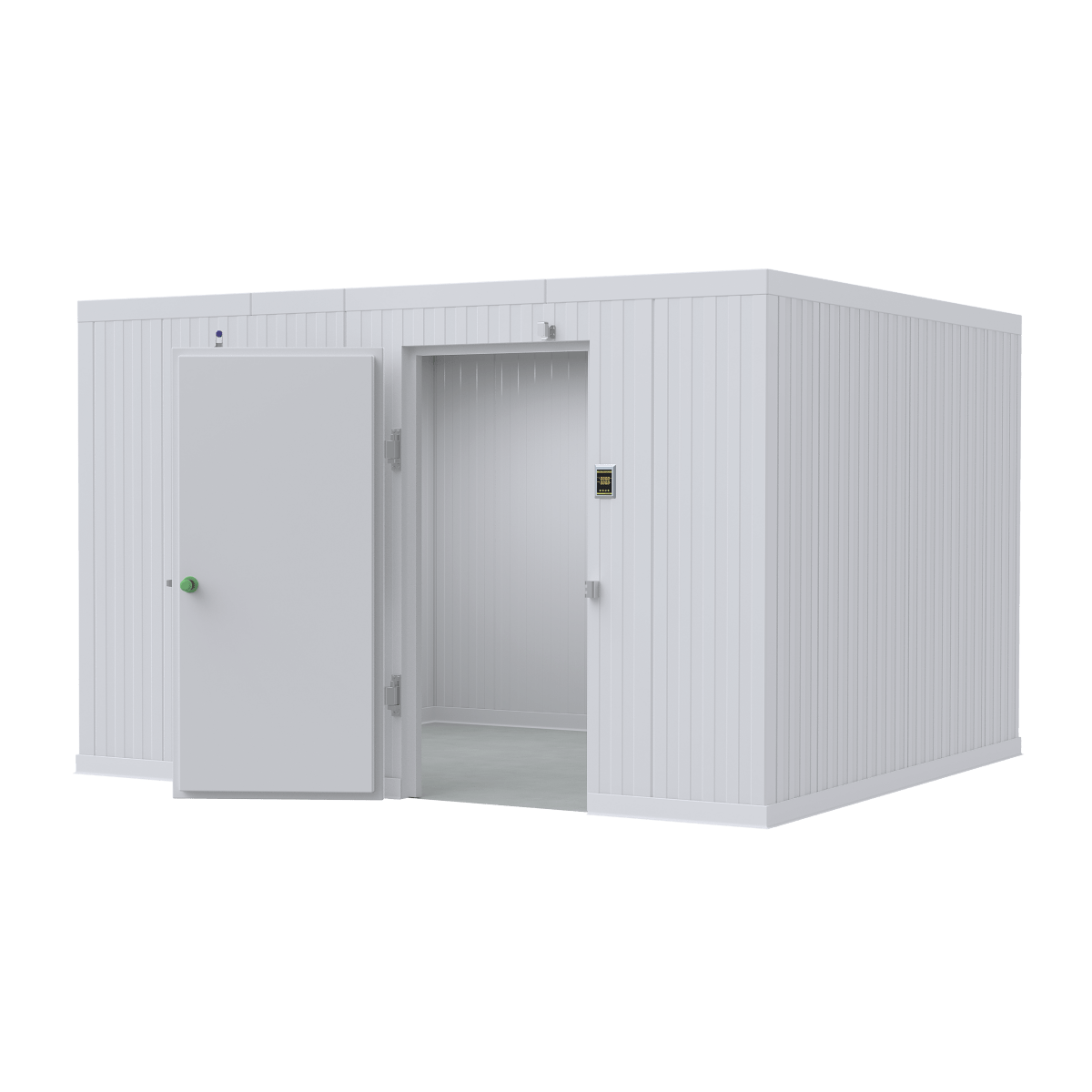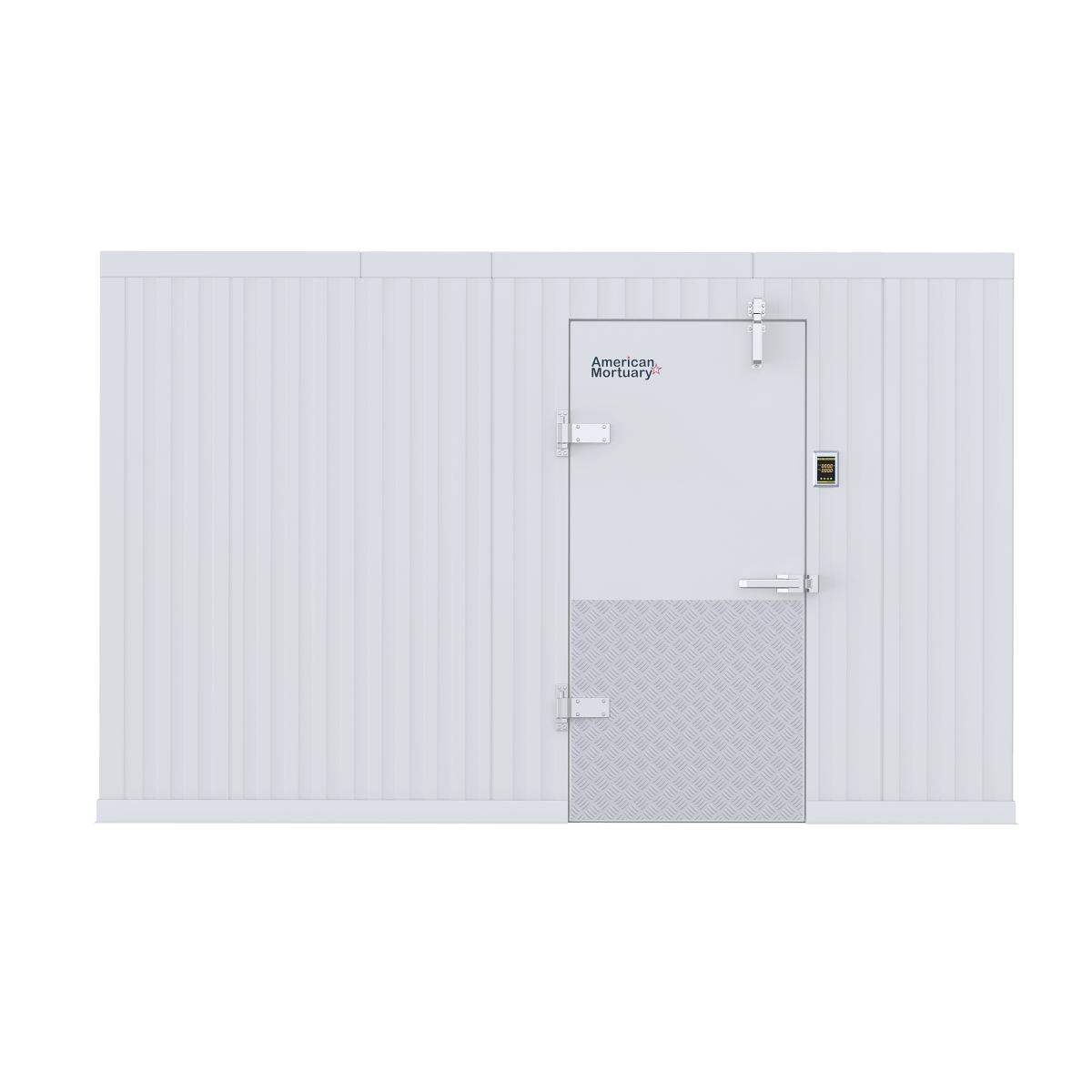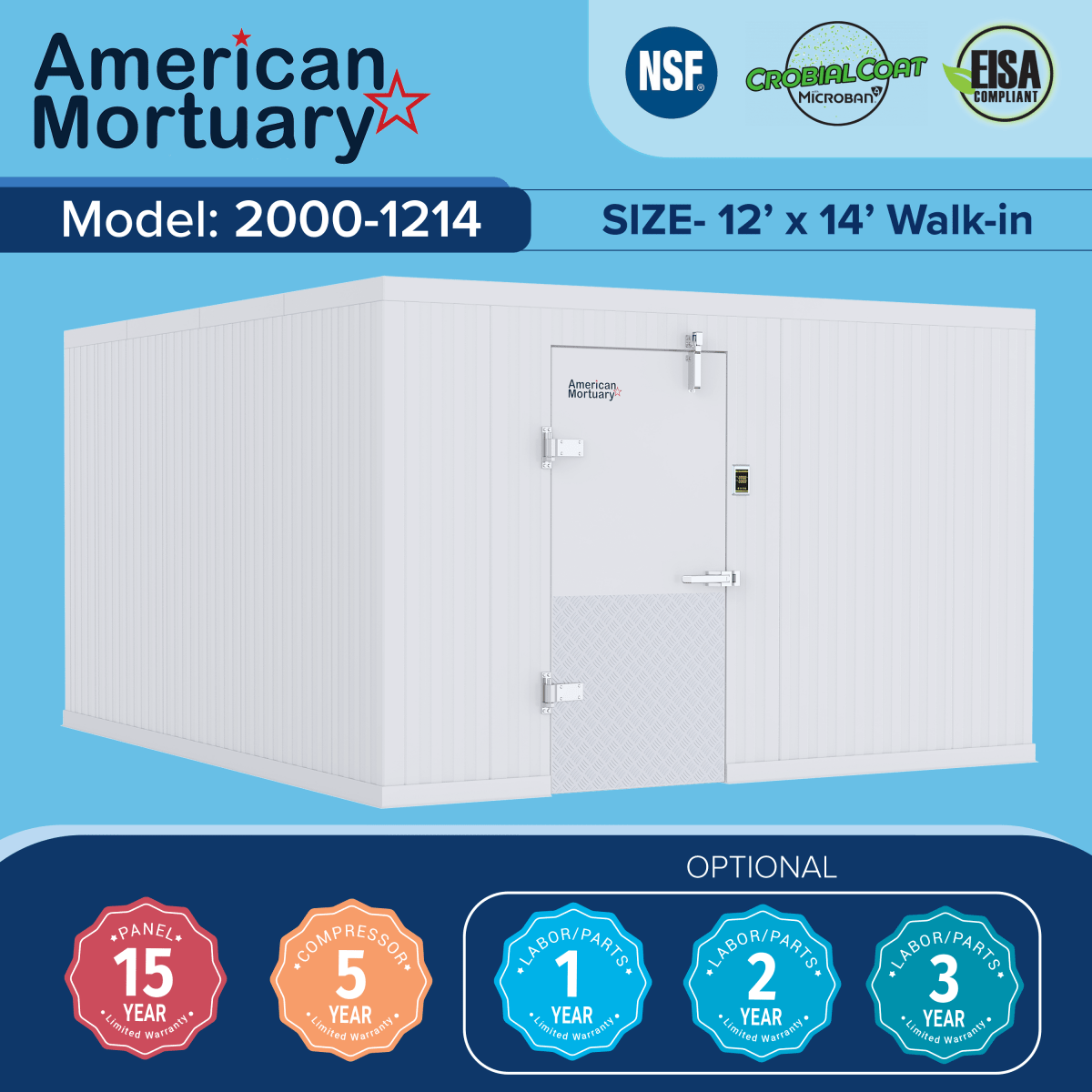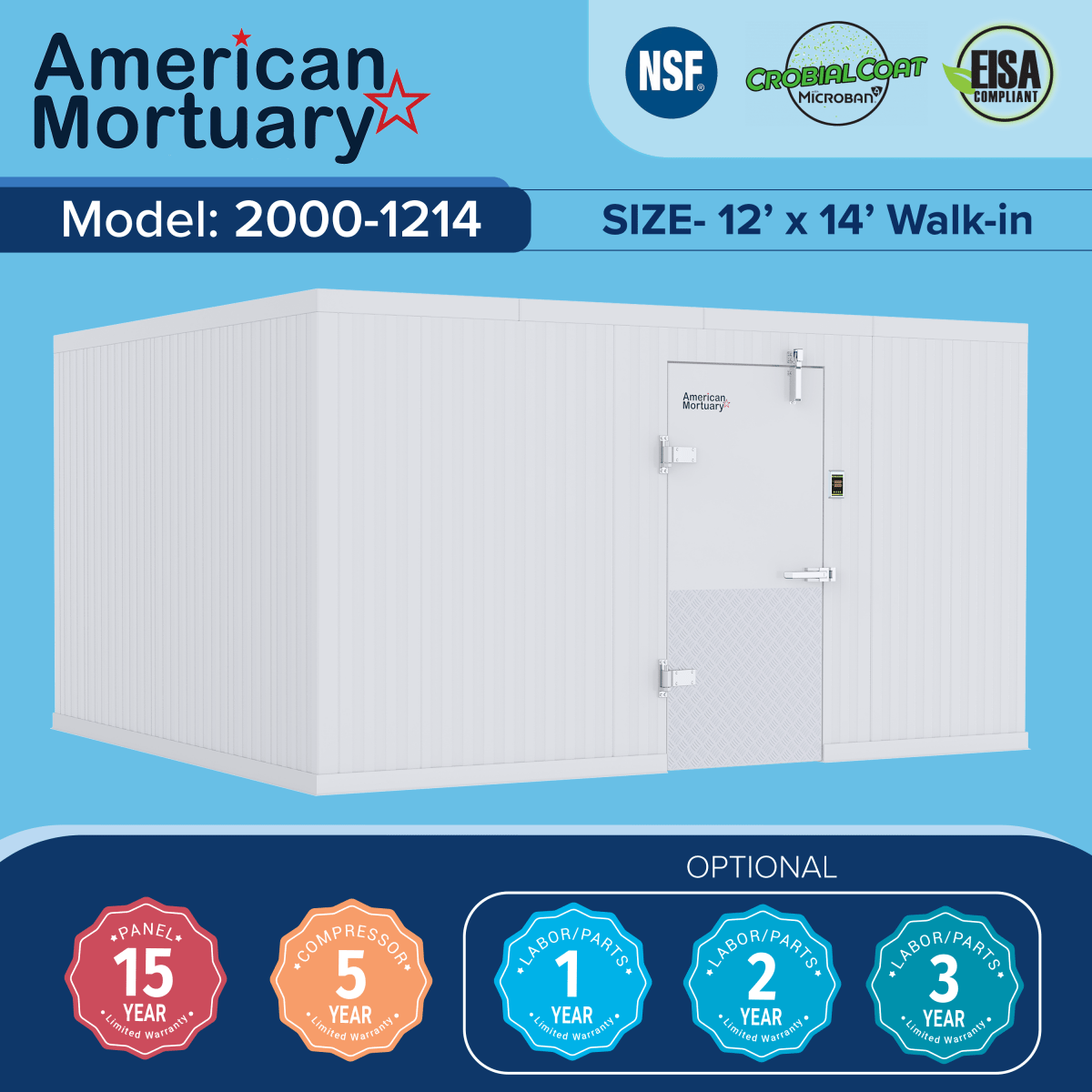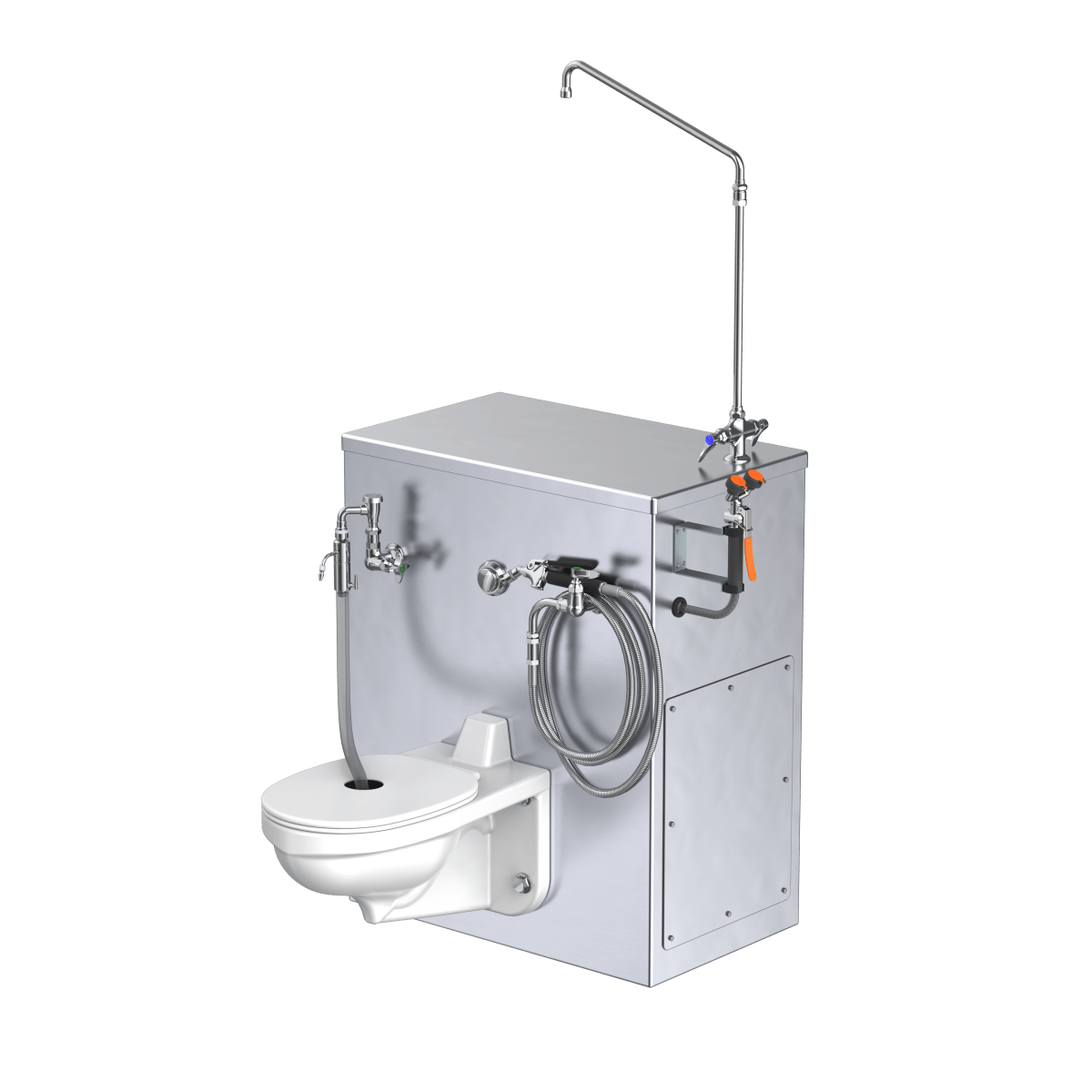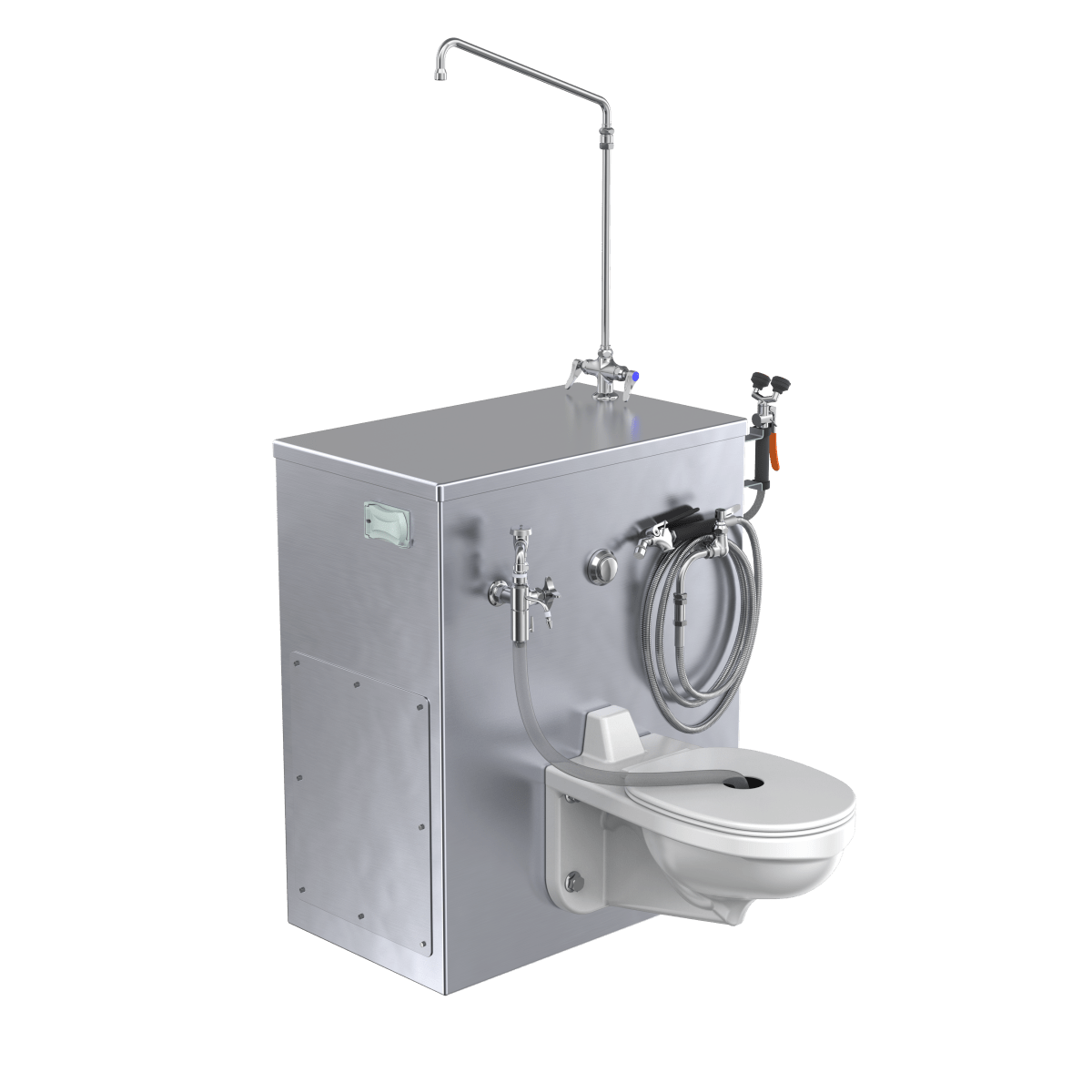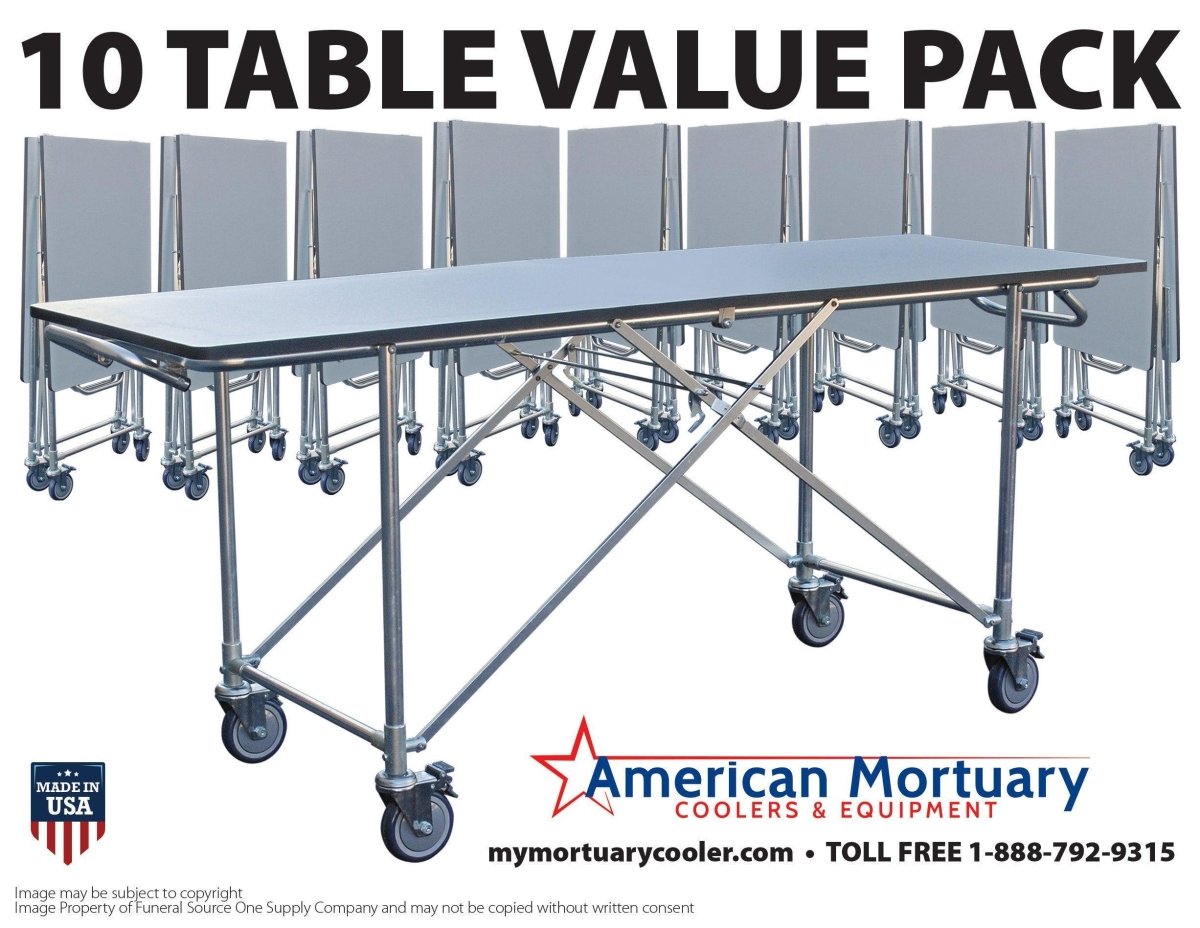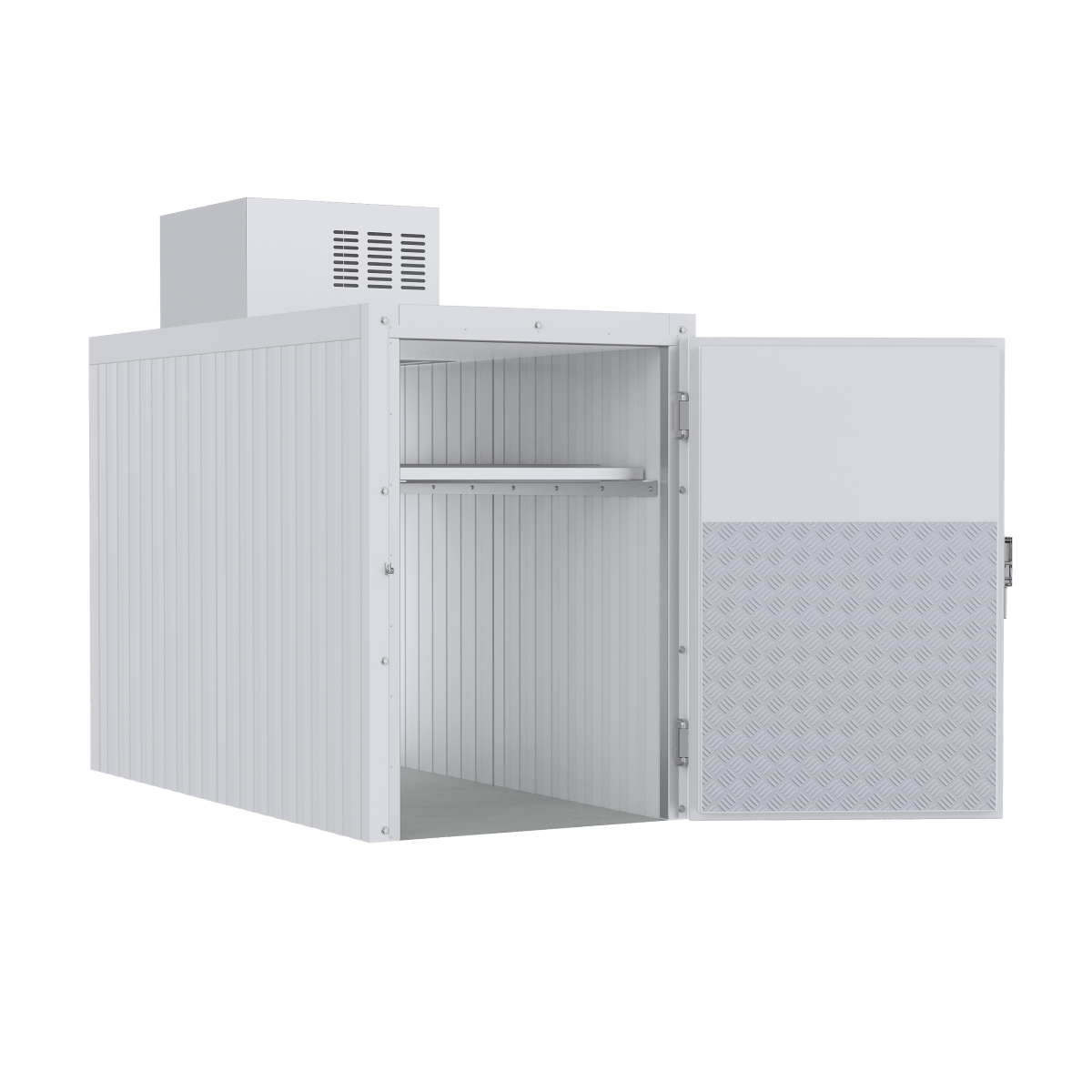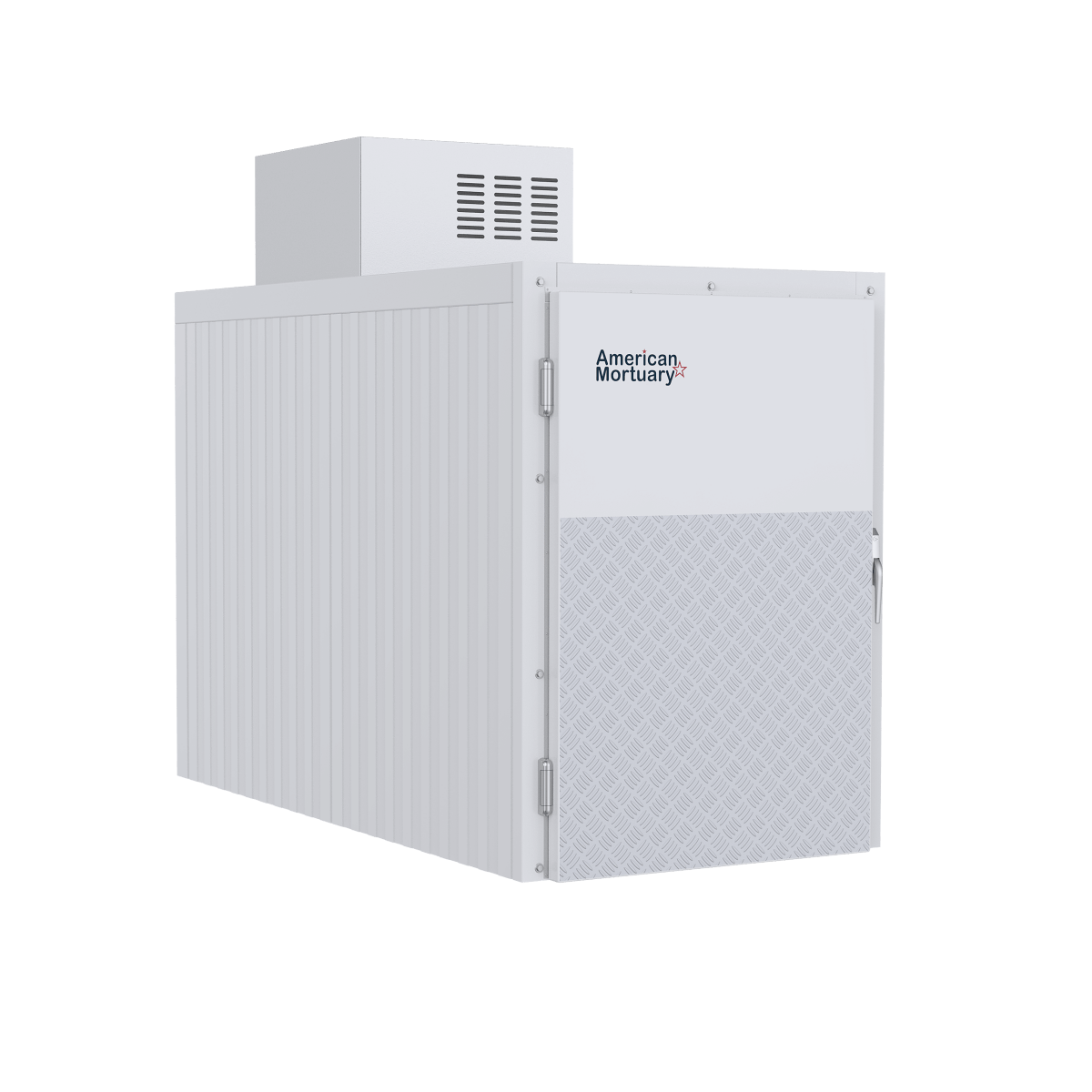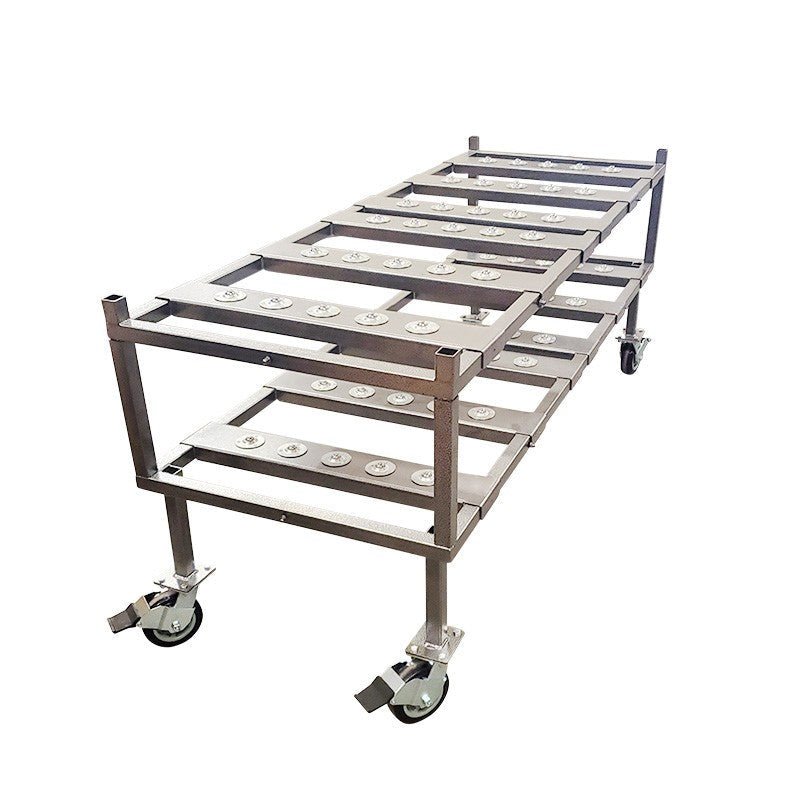Cooling Smarter: The Power of Energy Efficiency
When it comes to keeping things cool without watching your electricity bill soar, energy efficient coolers are the unsung heroes of modern refrigeration. These remarkable units do everything their power-hungry cousins can—but with a fraction of the electricity consumption.
Energy efficient coolers are specially designed cooling systems that provide the same reliable temperature control you expect while significantly reducing energy use. Unlike conventional models that constantly cycle on and off (wasting electricity in the process), these smart coolers use advanced technology to maintain consistent temperatures with minimal power.
The energy savings are impressive—depending on which type you choose, you could use anywhere from 22% to 75% less electricity than standard models. That translates to real money staying in your wallet, with many users saving over $95 throughout a unit's lifetime. Some specific models can save nearly $40 annually on energy costs alone.
The variety of energy efficient coolers available today means there's something for every need. Evaporative (or swamp) coolers harness the natural cooling power of water evaporation, while powered compressor models use advanced insulation and variable-speed motors to maintain even very cold temperatures efficiently. Thermoelectric coolers and ENERGY STAR certified water coolers round out the main options, each with their own advantages for different situations.
"If all water coolers sold in the United States were ENERGY STAR certified, the energy cost savings would grow to more than $250 million each year, and more than 4.5 billion pounds of greenhouse gas emissions would be prevented."
The environmental impact of switching to efficient cooling can't be overstated. By reducing electricity consumption, these units directly decrease greenhouse gas emissions. It's a simple change that benefits both your budget and our planet.
What makes these coolers so efficient varies by type. Some rely on the cooling properties of evaporating water—a process that naturally cools air without energy-intensive compression. Others use cutting-edge compressor technology with variable speed motors that adjust to cooling demands rather than simply turning on and off. Advanced insulation plays a crucial role too, keeping the cold in and the heat out with minimal energy expenditure.
I'm an expert in energy efficient cooling systems with special focus on refrigeration for funeral homes and mortuaries across America. My work centers on developing energy efficient coolers that maintain precise, reliable temperatures 24/7 while keeping operational costs manageable for businesses where cooling failure simply isn't an option.

Energy Efficient Coolers 101: What Sets Them Apart
Ever wondered what makes an energy efficient cooler different from the one gathering dust in your garage? The distinction might not be obvious at first glance, but the differences run deep – right into your power bill and environmental footprint.
Energy efficient coolers deliver the same cooling power as their conventional cousins while sipping electricity instead of guzzling it. It's like comparing a fuel-efficient hybrid to a gas-guzzling muscle car – both will get you there, but one costs a lot less along the way.
The savings are impressive. ENERGY STAR certified water coolers use about 22% less energy than standard models. Even more remarkable, evaporative coolers can slash electricity use by up to 75% compared to traditional air conditioning. These aren't minor tweaks – they represent complete rethinks of cooling technology.
One of the biggest energy vampires in standard coolers is standby power consumption. Traditional units often cycle on and off repeatedly, drawing power even when they're not actively cooling. Modern energy efficient models solve this with smart eco-modes that optimize compressor cycles and minimize those standby losses.
The planet notices these differences too. If every water cooler sold in America carried the ENERGY STAR certification, we'd prevent more than 4.5 billion pounds of greenhouse gas emissions annually – like taking 440,000 cars off the road completely.
How Standard Coolers Waste Power
Your standard cooler wastes energy in ways you might not even realize. Those air leaks around worn door seals? They're like leaving your refrigerator door slightly open all day. Poor insulation in conventional coolers allows heat to transfer through the walls, making the cooling system work overtime.
The start-stop cycle of standard compressors is another major culprit. Most run at just one speed – full blast or nothing – rather than adjusting to your actual cooling needs. This constant cycling eats electricity and shortens the life of components.
Outdated technology plays a role too. Older fan motors and cooling components draw more power than necessary for the same cooling effect. And many standard coolers suffer from inefficient design with poor airflow management that creates hotspots and reduces overall effectiveness.
As Jeff Gordon from Cooler Solutions Inc. puts it: "Many cooling challenges stem from outdated technology that wasn't designed with energy efficiency in mind. Today's energy efficient coolers address these fundamental design flaws."
Energy Efficient Coolers: Core Principles
Energy efficient coolers aren't just tweaked versions of old designs – they're built differently from the ground up.
At their heart, most use variable-speed fans and compressors that adjust output based on actual cooling needs. Instead of the all-or-nothing approach, they can run at just the right power level for current conditions. The Engel Platinum MT35, for example, draws as little as 31.7 watts while cooling by precisely controlling its compressor speed.
Smart thermostats and digital controls maintain exact temperatures without the wasteful temperature swings common in mechanical thermostats. They respond more quickly and accurately to changing conditions, saving energy with every degree.
The walls of energy efficient coolers feature high-R value insulation – thicker, higher-quality materials that dramatically reduce heat transfer. Commercial walk-in coolers now come with 4-inch foamed-in-place urethane panels boasting R-values of 29 to 32, creating a much more effective thermal barrier.
Sealed systems make a big difference too. Magnetic door gaskets and positive-pressure sealing systems prevent air leakage, maintaining temperature without forcing the cooling system to compensate constantly.
Energy-saving components round out the package: LED lighting uses a fraction of the power of older bulbs, ECM (Electronically Commutated Motor) fans run more efficiently, and high-performance condensers transfer heat more effectively – all contributing to those impressive energy savings.
These aren't just minor improvements. Together, they represent a fundamental rethinking of how cooling should work in a world where both energy costs and environmental concerns matter more than ever.
The Main Types of Energy Efficient Coolers

When it comes to keeping things cool while keeping your energy bills low, not all coolers are created equal. Let's explore the main types of energy efficient coolers available today, each with its own special talents for specific cooling needs.
Evaporative (Swamp) Coolers
If you live in a dry climate, evaporative coolers might just be your new best friend. These clever devices use up to 75% less electricity than traditional air conditioners, making them champions of energy efficiency.
Here's the magic behind them: hot, dry air passes through water-soaked pads, and as the water evaporates, it naturally cools the air by 15° to 40°F before gently circulating it throughout your space. It's like how you feel cooler when stepping out of a pool on a breezy day – nature's air conditioning!
These coolers shine brightest in dry regions like the American Southwest, where humidity stays below 50%. In these conditions, a good evaporative cooler delivers impressive cooling while sipping electricity compared to traditional AC.
For the best performance, look for models with two-speed fans and vent-only modes that let you control exactly how much cooling you need. The cooling pad material matters too – rigid media lasts longer than fiber pads, saving you maintenance headaches down the road.
As the Department of Energy points out, "In low-humidity areas, evaporating water into the air provides a natural and energy-efficient means of cooling." For easier maintenance, many professionals recommend ground-mounted horizontal units rather than roof installations, which also reduces the risk of roof leaks.
Powered Compressor Coolers
When you need serious cooling power that can reach sub-zero temperatures, energy efficient coolers with compressors are your go-to solution. These robust units work similarly to your home refrigerator but are engineered for maximum efficiency in portable or specialized applications.
The technology is impressive – a compressor circulates refrigerant that absorbs and releases heat through compression and expansion cycles. Modern models have come a long way in reducing power consumption while maintaining powerful cooling performance.
Take the Dometic CFX3 45, which can chill contents down to a frosty -7.6°F while drawing just 50.7 watts during cooling. Even more impressive is the Engel Platinum MT35, which sips a mere 31.7 watts while cooling – about the same as a small light bulb!
These coolers are perfect for off-grid trips, vehicle-based cooling, or any situation requiring precise temperature control without access to abundant electricity. Many models now include smart features like smartphone app integration and battery protection settings that prevent accidentally draining your vehicle's battery – a lifesaver on camping trips!
Thermoelectric Coolers
Here's something cool (pun intended): thermoelectric coolers can both chill and warm your items with the same device. These unique energy efficient coolers use the Peltier effect – a fascinating bit of physics where electric current flowing through a junction between different conductors creates a temperature difference.
The beauty of this design is its simplicity – with no compressor or refrigerant, these coolers operate silently and can switch from cooling to heating just by reversing the current. Think about the convenience of keeping your lunch cold during the day and warming your dinner on the way home!
The Koolatron Portable 45 exemplifies this versatility, capable of both cooling and heating depending on your needs. While it draws more power (62.3 watts) than compressor models and can only cool to about 30-40°F below the surrounding temperature, the dual functionality makes it perfect for certain situations.
These coolers are ideal when you need light-duty cooling in a quiet environment or the flexibility of both heating and cooling in one compact unit. They're particularly popular for office use, road trips, and situations where noise would be intrusive.
ENERGY STAR Certified Water Coolers
We often overlook water coolers when thinking about energy efficiency, but these workplace and home staples offer significant opportunities for savings. Energy efficient coolers with the ENERGY STAR certification use about 22% less energy than standard models, adding up to more than $95 in savings over their lifetime.
The secret to their efficiency lies in improved insulation, smarter compressors, and more precise temperature controls. Cold-only and cook & cold water coolers can save nearly $40 per year compared to conventional models – that's money in your pocket while still enjoying refreshing water!
You'll find several types to choose from: storage-type coolers maintain water in internal tanks, cycling periodically to maintain temperature; on-demand coolers heat or cool water only when you need it, reducing standby energy waste; and point-of-use models connect directly to water lines, eliminating bottle delivery altogether.
When choosing a water cooler for your space, consider your daily water needs. A small office might be perfectly served by a low-capacity bottle-source cooler, while busy commercial settings might need a high-capacity unit capable of dispensing more than half a gallon of cold water per hour.
As ENERGY STAR guidelines suggest, "On-demand units can be a great choice if hot water is not the primary need, while storage-type units better suit spaces with heavy hot beverage use." The right choice depends on your specific patterns of use throughout the day.
How Energy Efficient Coolers Work & the Tech That Saves Watts
Ever wonder what makes energy efficient coolers so much better than their power-hungry cousins? It's all about smart technology that maximizes cooling while minimizing electricity use. Let's peek under the hood at these clever cooling innovations!
Evaporative coolers work on a beautifully simple principle that's been used for centuries. When water evaporates, it naturally pulls heat from surrounding air. Modern swamp coolers harness this by using a fan to draw warm outside air through water-soaked pads, dropping the temperature by 15° to 40°F before sending that refreshing coolness into your space. As the National Renewable Energy Laboratory points out in their 2001 study, "evaporative coolers are rated by the cubic feet per minute (CFM) of air that they can blow into your home," with proper sizing providing 20-40 air changes hourly.
Compressor-based coolers, meanwhile, have revolutionized the traditional refrigeration cycle with smart energy-saving tweaks. Instead of the old-school on/off approach, energy efficient coolers now use variable-speed compressors that adjust their output based on actual cooling needs – like a car with cruise control instead of just gas and brake. Add in precise electronic expansion valves and high-efficiency condenser coils, and you've got a cooling powerhouse that sips electricity. The Dometic CFX3 45 exemplifies this efficiency, achieving temperatures below zero while using about the same power as a light bulb!
Thermoelectric coolers employ the fascinating Peltier effect, where electricity flowing through a junction between different conductors creates a temperature difference. The coolest part? Reverse the current, and your cooler becomes a heater! While not as energy-efficient as compressors for pure cooling, this versatility makes them perfect for certain applications.
The unsung hero in modern energy efficient coolers is often the insulation. Today's commercial walk-in coolers feature impressive 4-inch foamed-in-place urethane panels with R-values reaching 32, while portable models use space-age vacuum-insulated panels that keep things cold with much thinner walls. Magnetic door gaskets create airtight seals that prevent the cold from sneaking out and wasting energy.
Digital smarts have transformed cooling efficiency too. Today's coolers feature eco-modes that reduce compressor speeds during steady operation, smart defrost cycles that run only when needed, and battery protection to prevent draining your vehicle's power source. Some models even connect to smartphone apps so you can adjust settings remotely – perfect for checking if your cooler is running efficiently while you're away.

Advanced Features to Look For
When shopping for your next energy efficient cooler, certain advanced features can take your energy savings to the next level.
Variable-speed pumps and fans are game-changers in the efficiency department. Unlike old-school components that blast at full power or shut off completely, these smart components adjust their output based on what you actually need. Think of it like dimming your lights instead of just flipping them on and off – you save energy and extend component life by reducing wear and tear.
Two-stage systems with pre-coolers are worth their weight in gold, especially in scorching conditions. These clever setups cool the air before it even reaches the main cooling pads, boosting performance while using less energy. As the Department of Energy puts it, these systems "add less humidity and perform better in extreme heat" – a win-win for comfort and efficiency.
Smart app integration has transformed how we interact with our coolers. Modern energy efficient coolers now offer apps that let you monitor temperatures, track power use, and receive alerts if someone leaves the lid open. The Dometic CFX3 series, for instance, sends notifications if the lid stays open – a simple feature that can prevent food spoilage and save significant energy.
For portable coolers, battery protection systems are essential lifesavers. These smart systems monitor your vehicle's battery voltage and automatically shut down the cooler before you're stranded with a dead battery. Most quality models let you choose protection levels to match your specific needs and battery type.
Off-Grid & Solar-Powered Setups
Combining solar power with energy efficient coolers creates truly sustainable cooling that's perfect for cabins, RVs, boats, and remote locations.
Many modern coolers can connect directly to DC power sources like solar panels, eliminating the efficiency losses that occur when converting DC to AC power. This direct connection is brilliant for off-grid applications, as Southwest Solar Inc. enthusiastically notes: "Greenhouses and solar chill coolers go together like bread and butter! Greenhouses wired direct to panels perform better the brighter the sun shines."
For larger cooling needs, innovative hybrid mini-split heat pumps can run directly from photovoltaic panels without batteries, cleverly merging solar and grid power for maximum efficiency. These systems provide reliable cooling even in challenging off-grid environments.
Fan selection makes a huge difference in solar-powered cooling systems. As Southwest Solar explains with practical wisdom, "Propeller fans can move just as much air as a squirrel-cage blower with less energy." This simple design choice can dramatically reduce power requirements and help your solar system keep up with cooling demands.
Solar-powered cooling solutions also help truck drivers comply with "No-Idle Laws" that exist in all 50 states. These regulations limit engine idling for air conditioning, but with solar-powered energy efficient coolers, drivers can stay comfortable all night without running their engines or draining batteries.
For the best results with solar cooling, experts recommend matching your solar panel capacity to your cooler's power needs, including a battery and charge controller for consistent voltage, and keeping ductwork short and properly sized. With the right setup, you can enjoy efficient, eco-friendly cooling virtually anywhere the sun shines!
Benefits, Cost Savings & Environmental Impact

When you invest in an energy efficient cooler, you're not just buying a cooling appliance – you're making a choice that benefits your wallet, your comfort, and our shared environment. Let's explore what makes these coolers such a smart investment.
The financial advantages are immediate and compelling. Every month, you'll see the difference on your utility bills. ENERGY STAR certified water coolers, for instance, save over $95 throughout their lifetime compared to conventional models. If you opt for cold-only or cook & cold varieties, you're looking at nearly $40 in annual savings – money that stays right in your pocket.
For homeowners using larger cooling systems, the savings are even more dramatic. Evaporative coolers slash electricity usage by up to 75% compared to traditional air conditioning. For a typical home in a hot, dry climate, that could mean hundreds of dollars saved every cooling season.
The environmental benefits are equally impressive. If all water coolers sold in the United States carried the ENERGY STAR certification, we'd prevent more than 4.5 billion pounds of greenhouse gas emissions annually. That's the equivalent of taking 440,000 cars off the road! Many energy efficient coolers also avoid using refrigerants that damage the ozone layer, further reducing their environmental footprint.
There's another benefit that often goes unmentioned: peak load reduction. By consuming less electricity during scorching summer days, energy efficient coolers help reduce strain on the electrical grid when it's most vulnerable. This "peak-load shaving" helps utilities avoid building power plants that would only run during extreme heat events – a win for everyone's electricity rates in the long run.
It's worth noting that some solutions do involve trade-offs. Evaporative coolers, while extremely energy efficient, typically use between 3½ to 10 gallons of water per hour. As the Department of Energy points out, "Continuous water use may be a concern in water-scarce regions." Even accounting for water consumption, however, these coolers usually represent a net environmental benefit in suitable climates when compared to conventional air conditioning.
Real-World Savings Numbers & Payback
Let's talk dollars and cents. Understanding the actual savings and payback periods helps put the benefits of energy efficient coolers into clear perspective.
For water coolers, the math is straightforward. ENERGY STAR certified models use about 22% less energy than conventional units. This translates to nearly $40 in annual savings for cold-only and cook & cold units, with lifetime savings exceeding $95 per unit. Most people recoup the additional cost of the ENERGY STAR model within 2-3 years – after that, it's all savings.
Evaporative coolers deliver even more dramatic results. Consider a 1,500 square foot home in a hot, dry climate: while a traditional central AC might consume around 4,000 kWh during cooling season, an evaporative cooler might use just 1,000 kWh. At $0.12 per kWh, that's roughly $360 in electricity savings each year. Yes, you'll spend $20-60 on water, but your net annual savings still reach $300-340. Most homeowners see a complete payback within 3-5 years compared to central AC costs.
For portable solutions, the savings are equally impressive. The Engel Platinum MT35 draws just 31.7 watts while cooling – significantly less than typical thermoelectric coolers that pull 60-80 watts. This difference can save you 0.68-1.16 kWh daily, which adds up to 20.4-34.8 kWh monthly, or $29-50 annually if used year-round. For off-grid applications, this efficiency can reduce your required solar panel and battery capacity by 50-60%, saving you thousands in initial equipment costs.
The real beauty of these savings is that they don't require any lifestyle sacrifices. You'll enjoy the same cooling comfort while consuming less energy and spending less money.
Energy Efficient Coolers vs Traditional AC or Fridges
When comparing energy efficient coolers to conventional cooling options, the differences become even more apparent.
Evaporative coolers and traditional AC systems approach cooling from fundamentally different angles. While traditional AC recirculates the same air while removing humidity, evaporative coolers introduce fresh air and add humidity. This makes evaporative coolers ideal for dry climates (below 50% humidity) where the added moisture actually improves comfort. They're also simpler to install – many homeowners handle it themselves – and don't use refrigerants with high global warming potential.
As Home Depot's buying guide notes, "Many people wonder, do evaporative coolers work effectively? The article answers that they do in dry, hot climates."
The temperature drop from evaporative coolers typically ranges from 15-40°F, which is more than enough to create comfortable conditions in most hot, dry regions. While they don't offer the precise temperature control of traditional AC, they provide ample cooling at a fraction of the energy cost.
Portable compressor coolers have evolved to outperform traditional mini-fridges in several key areas. The Dometic CFX3 45, for example, draws just 50.7 watts while cooling – compared to 80-100 watts for many mini-fridges with similar capacity. These modern coolers often achieve lower temperatures (the Dometic reaches -7.6°F), offer greater portability with battery protection features, and can operate from multiple power sources including AC, DC, and solar.
The efficiency difference is perhaps best illustrated by the Coefficient of Performance (COP) – the ratio of cooling provided to energy consumed. Traditional air conditioners typically achieve a COP of 2.3-3.5, while advanced heat pumps reach 3.0-5.0. Evaporative coolers in ideal conditions? They can deliver an effective COP of 12-40. This dramatic efficiency advantage explains why they can achieve up to 75% energy savings in suitable climates.
Whether you're cooling a home, office, or specialized facility, energy efficient coolers deliver significant advantages that benefit both your bottom line and our shared environment. The initial investment quickly pays for itself, making these cooling solutions one of the smartest energy upgrades available today.
Buying Guide: Choosing, Sizing & Certifications
Finding the perfect energy efficient cooler doesn't have to feel like searching for a needle in a haystack. With a little guidance, you can find a model that keeps things cool without making your electricity bill hot.
Let's start with the most important factor – getting the size right. For evaporative coolers, there's a simple formula that takes the guesswork out:
Required CFM = (Square Footage x Ceiling Height) / 2
So if you have a 1,500-square-foot home with standard 8-foot ceilings, you'd need about 6,000 CFM of cooling power. Think of it like this: your cooler should provide 20 to 40 complete air changes every hour. Too small, and you'll be sweating; too large, and you'll be wasting both energy and money.
Where you live plays a huge role in which cooling technology makes sense. If you're in a hot, dry place like Arizona, evaporative coolers are your best friend, offering maximum efficiency. Living in the humid Southeast? You'll want to look at compressor-based systems with high SEER ratings instead. For those lucky folks in moderate climates, consider a two-speed evaporative cooler with a vent-only mode for those "just right" days when you only need a gentle breeze.
When shopping, certifications are your assurance of genuine efficiency. The ENERGY STAR label is the gold standard – it means the product meets strict efficiency guidelines set by the EPA. Since 2017, all commercial refrigeration must comply with Department of Energy (DOE) efficiency standards. And if you're in California, look for CEC certification, which often has even stricter requirements.
"When shopping for a water cooler, be sure to look for the ENERGY STAR label," recommends the ENERGY STAR program. "ENERGY STAR certified water coolers use about 22 percent less energy than conventional models."

Key Features Checklist Before You Buy
Before you pull out your credit card, make sure your chosen energy efficient cooler has the features that will maximize both performance and savings.
For evaporative coolers, look for a two-speed fan with vent-only mode – this gives you options for different weather conditions. A water-saving purge pump will help conserve water, while high-quality cooling pads (rigid media lasts longer than fiber) ensure consistent cooling. Consider a ground-mounted horizontal design for easier maintenance, and check that it's built with rust-resistant materials to ensure longevity.
If you're eyeing a compressor cooler, prioritize models with a variable-speed compressor that adjusts based on cooling needs. Multiple battery protection settings are essential if you'll use it in a vehicle. A digital temperature control gives you precision, while an eco mode helps maximize energy savings. Don't overlook thick insulation with magnetic door seals and LED interior lighting – both contribute to efficiency.
Water cooler shoppers should insist on ENERGY STAR certification as a starting point. An on-demand hot water option that heats only when needed saves energy, and a room-temperature dispensing option adds versatility. Make sure to choose a model with appropriate capacity for your needs, and if it's a point-of-use model, check for a good filtration system.
As the Department of Energy wisely suggests, "Use units with at least two speeds and a vent-only mode to serve as a whole-house fan during mild weather."
Using Rebates, Incentives & Programs
Here's a little secret: you might not need to pay full price for your energy efficient cooler. There's a whole world of rebates and incentives just waiting to help lower your costs.
Many electric utilities offer substantial rebates when you purchase ENERGY STAR certified products. If you live in a drought-prone area, your water utility might even provide additional incentives for evaporative coolers since they're more water-efficient than traditional AC. Don't assume – check with both utilities to see what's available.
State programs can also put money back in your pocket. The New York State Energy Research and Development Authority (NYSERDA) offers attractive incentives for energy efficient cooling solutions. California residents enjoy some of the most generous energy efficiency rebate programs in the country. And many other states have clean energy funds with specific incentives for efficient cooling options.
Don't forget about federal tax credits! The government periodically offers these for energy efficient home improvements, including certain cooling systems that meet specific efficiency thresholds. A quick chat with your tax professional can help determine if you qualify.
Finding these money-saving opportunities is easier than you might think. Use the ENERGY STAR Rebate Finder tool, contact your local utility companies, visit your state energy office website, or ask HVAC professionals who typically stay up-to-date on available incentives.
As ENERGY STAR advises, "Check for local rebates with the Rebate Finder feature." These incentives can sometimes slash the cost of high-efficiency cooling systems by 10-30%, dramatically improving your return on investment.
Top-Rated Models of 2024
After extensive real-world testing, these energy efficient coolers have proven themselves to be the cream of the crop in their categories.
The Dometic CFX3 45 takes the crown for best overall powered cooler. It can reach an impressive -7.6 °F while drawing just 50.7 W of power. With its variable-speed compressor, smartphone app control, and rugged construction, it's worth its $900–1,000 price tag. As one reviewer put it, "This cooler is well worth its price when you need something rugged and reliable."
For the ultimate in energy efficiency, the Engel Platinum MT35 is hard to beat. Drawing a mere 31.7 W while cooling to 5.5 °F, its swing-motor compressor and excellent battery protection make it a standout choice in the $800–900 range. Users consistently praise its "impressive energy efficiency."
Budget-conscious shoppers should check out the Costway 54. It reaches an impressive -8.9 °F while using just 50 W in normal mode and an even more efficient 38.9 W in Eco mode. With digital controls and an interior LED light for around $350–450, it offers exceptional value.
Need both cooling and heating? The Koolatron Portable 45 has you covered. It reaches a minimum temperature of 26.8 °F while using 62.3 W, and can also heat your items when needed. At $150–200, it's a versatile option.
For home cooling in dry climates, the MasterCool Down-Discharge evaporative cooler delivers 4,500 CFM of cooling power, enough for up to 1,600 square feet. Its two-speed motor and rigid media cooling pads make it a reliable choice in the $500–700 range.
These top performers represent the best balance of cooling power, energy efficiency, and value available today.
Maintenance & Maximizing Lifespan
Taking good care of your energy efficient cooler isn't just about preserving your investment – it's the key to keeping those energy-saving benefits flowing year after year. I've seen how a little regular attention can make the difference between a unit that lasts for years and one that struggles after just a few seasons.
Evaporative coolers need the most frequent care because of their water-based operation. During cooling season, try to check the water reservoir monthly, looking for any buildup or algae that might be forming. This is also the perfect time to inspect those cooling pads – they're the workhorses of your system and can get clogged with minerals, especially in hard water areas.
"I recommend replacing cooling pads at least twice per cooling season," says cooling expert James Miller. "It's a small investment that pays big dividends in efficiency."
When winter approaches, proper shutdown becomes crucial. Drain all water completely, give the reservoir a thorough cleaning, and don't forget to disconnect the water supply. A good protective cover can shield your unit from harsh winter weather and extend its life considerably.
For compressor-based energy efficient coolers like those portable units, maintenance is simpler but still important. Every few months, take a moment to wipe down those condenser coils – dust is the enemy of efficiency! Those door gaskets deserve special attention too. Run your hand along them periodically to check for any cracks or signs of wear. A failing gasket is like leaving the door slightly open all the time – it forces your cooler to work overtime.
Water coolers need regular sanitizing, especially in busy environments. Monthly cleaning of all water contact areas prevents buildup that can affect both efficiency and water quality. For point-of-use models, ENERGY STAR emphasizes "maintaining and replacing filters regularly" as a best practice for keeping performance optimal.
DIY Maintenance Schedule
Creating a simple maintenance calendar helps ensure your energy efficient cooler gets the consistent care it needs. I've found that breaking tasks into manageable timeframes makes maintenance feel less overwhelming.
Monthly attention pays big dividends. Take a quick walk around your unit, listening for unusual noises and checking for any water leaks. This is also the perfect time to verify your temperature settings and clean those exterior surfaces.
When the seasons change (about quarterly), dig a little deeper. Clean or replace air filters, carefully inspect door seals, and make sure condenser coils on compressor models are free from dust and debris. For water-based systems, check all connections for signs of leaks or mineral buildup.
Twice yearly, plan for more thorough care. Replace those evaporative cooler pads, give water reservoirs a deep clean, and check that fans are operating smoothly. A few drops of lubricant on moving parts (following manufacturer guidelines) can prevent unnecessary wear.
Your annual maintenance might include bringing in a professional for larger systems. This is also the ideal time for complete sanitization of water coolers and verifying that your unit's energy consumption remains within specifications.
The Department of Energy offers an important safety reminder that I always emphasize: "Disconnect electricity before servicing to ensure safety." It only takes a moment to flip that breaker, but it could save your life.
How to Run Your Energy Efficient Cooler at Peak Efficiency
Beyond regular maintenance, how you operate your energy efficient cooler dramatically affects its performance and energy consumption. Let me share some practical wisdom that can make a real difference.
For evaporative coolers, proper airflow is everything. The Department of Energy recommends "opening windows or vents on the leeward side providing 1–2 sq ft per 1,000 cfm." This creates the ideal air exchange pathway for effective cooling. I've found that running these units early in the morning to pre-cool your space before the day heats up makes a tremendous difference in comfort and efficiency.
Consider installing ceiling vents that route warm exhaust to the attic. This smart upgrade improves both cooling efficiency and humidity control while maintaining home security – a win-win approach that many homeowners overlook.
When operating compressor-based energy efficient coolers, a little planning goes a long way. Pre-chilling contents before placing them in the cooler significantly reduces the initial cooling load. Think of it as giving your cooler a head start! Most quality models now include an eco mode that's perfect for steady-state operation, drawing less power while maintaining temperature.
If you're running your cooler from a vehicle battery, take advantage of those battery protection settings. They're designed to prevent your cooler from draining your vehicle's battery while still providing reliable cooling. Finding that sweet spot in the settings can mean the difference between returning to a dead car battery or enjoying perfectly chilled contents.
For water coolers, simple adjustments yield impressive results. When possible, use the room temperature option instead of heated or chilled water. Keep your unit away from heat sources and direct sunlight, which force it to work harder. For models with hot water features, consider scheduling your hot water usage during off-peak utility hours to reduce energy costs.
At American Mortuary Coolers, we've seen how these maintenance practices and efficiency tips can extend equipment life dramatically, especially in demanding environments where cooling reliability is absolutely essential. Our customers who follow these guidelines consistently report lower operating costs and fewer service calls over the life of their equipment.
For specialized applications like mortuary cooling, where temperature stability is crucial, these maintenance practices aren't just about energy savings – they're about ensuring reliable performance when it matters most. More info about American Mortuary Coolers equipment provides additional guidance for these specialized cooling needs.
Frequently Asked Questions about Energy Efficient Coolers
How much water do evaporative models consume?
If you're considering an evaporative cooler, water usage is probably on your mind. These systems typically use between 3.5 and 10 gallons of water per hour, which adds up over a cooling season. Your actual consumption will vary based on the size of your unit, your local weather, and how often you run the cooler.
For a typical summer, you might use anywhere from 4,000 to 10,000 gallons of water. That sounds like a lot, but there's an interesting trade-off happening: the reduced electricity consumption means power plants (which use water to generate electricity) are actually saving water on your behalf.
"Continuous water use may be a concern in water-scarce regions," notes the Department of Energy, and they're right. If you live in a drought-prone area, you'll want to weigh this carefully.
Want to keep your water usage to a minimum? Consider installing an automatic purge pump that only refreshes water when truly necessary. A water treatment system can also help reduce mineral buildup, extending the life of your cooling pads. And of course, using timers or smart controls ensures you're only cooling when you need to.
Does the ENERGY STAR label guarantee savings?
The blue ENERGY STAR label is a helpful starting point, but it's not a guarantee of specific dollar savings for your situation. Think of it as a signal that the product meets efficiency standards established by the Environmental Protection Agency – a good first step toward savings.
Your actual savings will depend on a few personal factors: how you use the cooler, what you're paying for electricity in your area, whether it's properly installed, and how inefficient your old model was.
That said, the numbers are promising. Energy efficient coolers with the ENERGY STAR certification typically use about 22% less energy than conventional models. For water coolers, this translates to saving over $95 over the lifetime of the unit, with cold-only and cook-&-cold models saving nearly $40 annually compared to standard options.
To maximize your savings, choose a cooler that's the right size for your needs (bigger isn't always better when it comes to efficiency). Follow the maintenance schedule, use those smart programmable features, and place your unit thoughtfully. Small steps, but they add up!
According to ENERGY STAR data, "If all water coolers sold in the United States were ENERGY STAR certified, the energy cost savings would grow to more than $250 million each year." That's the kind of collective impact that makes these individual choices meaningful.
Can energy efficient coolers work in humid climates?
The humidity question comes up a lot, and the answer depends on which type of energy efficient cooler you're considering.
For evaporative coolers, humidity is definitely a limiting factor. These systems work best in dry climates where the relative humidity stays below 50%. Why? Because they cool by evaporating water, and that process happens much more slowly when the air is already moisture-laden.
As Home Depot's buying guide puts it, "They require dry, hot air for optimal function and are best suited to warm, arid climates." If you're in the Southeast or other humid regions, you might want to look at other options.
The good news is that compressor-based coolers work beautifully regardless of humidity levels. Whether you're looking at portable compressor models or ENERGY STAR certified water coolers, their closed refrigeration systems function efficiently in any climate. The Dometic CFX3 45, for example, can achieve temperatures as low as ‑7.6 °F even when the air feels like a steam room.
There's also a middle ground: two-stage evaporative coolers can work reasonably well in moderately humid conditions. These clever systems pre-cool the air before it reaches the main cooling pads, improving performance when conditions aren't ideal. "Two-stage evaporative coolers with pre-coolers and efficient motors add less humidity and perform better in extreme heat," notes the Department of Energy.
So while humidity does complicate your cooling choices, there's almost certainly an energy efficient cooler that will work for your specific climate and needs.
Conclusion
When you're considering ways to stay cool while keeping your energy bills down, energy efficient coolers offer an impressive solution that's good for both your wallet and our planet. Throughout this guide, we've explored a variety of cooling technologies that deliver effective temperature control while significantly reducing energy consumption.
The savings are real and substantial. Evaporative coolers use up to 75% less electricity than traditional air conditioning systems. ENERGY STAR water coolers save about $95 over their lifetime compared to conventional models. These aren't just marketing claims—they're backed by rigorous testing and real-world performance.
Choosing the right cooler depends on your specific situation. If you live in Arizona or New Mexico, an evaporative cooler will likely give you the most bang for your buck in those dry climates. For RV enthusiasts and campers, compressor models like the Engel Platinum MT35 provide exceptional cooling with minimal battery drain. Office environments benefit most from ENERGY STAR certified water coolers with their consistent savings. And if you're living off the grid, solar-powered cooling solutions offer true energy independence.
What makes these coolers so efficient? It's a combination of smart engineering and innovative features. Variable-speed compressors adjust their output based on actual cooling needs rather than simply turning on and off. Advanced insulation materials prevent heat transfer more effectively than ever before. Digital controls maintain precise temperatures without the energy-wasting swings of mechanical thermostats.
The environmental benefits are perhaps even more impressive than the cost savings. If all water coolers sold in the United States met ENERGY STAR standards, we'd prevent more than 4.5 billion pounds of greenhouse gas emissions annually. That's like taking 440,000 cars off the road—a substantial contribution to fighting climate change through a simple purchasing decision.
At American Mortuary Coolers, we understand the critical importance of reliable, efficient cooling. While our Tennessee-based company specializes in custom cooling solutions for the funeral industry, the principles that guide our work—energy efficiency, durability, and customized design—apply across all cooling applications. We're proud to offer direct delivery of our cooling solutions to customers throughout the contiguous 48 states.
By choosing an energy efficient cooler, you're making a smart choice that pays dividends in multiple ways. You'll enjoy lower utility bills and reliable cooling performance while reducing your carbon footprint. Whether you're cooling beverages for a family gathering, preserving food on a camping trip, or maintaining comfortable temperatures in your home or workplace, today's energy efficient options simply make more sense.
For more information about American Mortuary Coolers and our approach to energy-efficient refrigeration, visit our equipment and supplies page.


